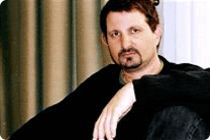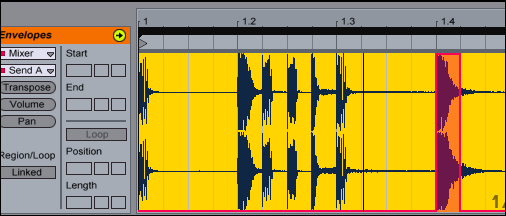Jeff Rona: Sound Manipulation in the Film World
Jeff Rona has made a name for himself as a masseur of the senses, creating scores that perfectly direct a listener's emotions, whether he is writing music to complement major Hollywood films or creating ambient soundscapes for bands and ensembles. Rona uses modern electronic means to manipulate organic and ethnic sounds, and has turned to Ableton Live as one of his main tools. Rona is also an accomplished composer of electronic and experimental music, and performs on keyboard and wind instruments, in addition to conducting orchestras. We sat down to talk with Rona about how he incorporates Live into his studio, and came away with a new Live trick bag.
To listen to an MP3 of the full interview, click here.
Logical Living
Like many film and TV composers, Rona uses Live in conjunction with Apple Logic Pro, utilizing the strengths of each program to generate cues and songs quickly: "I work in Logic, but Logic doesn't have a lot of tools for coming up with innovative variations on any kind of rhythmic material. So as I'm writing a piece of music, I have a sense of my tempo, I go into Live, in ReWire mode, locked to Logic, and then I start pulling bits and pieces from my own sound library into it. Then I start going from there, playing with the warp tools and effects until I come up with a group of variations on one sound. And those all get bounced back into Logic, so that they stay in my Logic arrangement."
Altering Sounds with Clip Envelopes
Generating innovative sonorities from traditional sounds is something Rona focuses on in all of his music work: "With the rather vast capabilities of a program like Live, what starts off as one sound can just take you through a huge set of ideas. I like to take something obvious and make it into something way less obvious. When I do music, I like, as much as I can, to keep it sounding as organic as possible. I like sounds that don't sound particularly electronic, but that are organic sounds, but unrecognizable, so you don't trace it back to kicks and snares or tablas or hi-hats or whatever."

One of the ways Rona alters sounds in Live is by using clip envelopes: "I've been using the clip envelopes a lot. In one case, I had a sound that was a guitar, run through a sample-and-hold filter. I was interested in building a melody, so with a sixteenth-note grid, I had a two-bar loop of a single note of a guitar sustaining through a sample-and-hold filter, but I started to push some of the slices up and down, so at the end it turned into this cool, hypnotic, rhythmic phrase. And nothing else in the world could have done that."
Another aspect of Live that Rona likes is the application of clip envelopes to sends, allowing him to get a dub-like, King Tubby effect on snares and beat oriented loops: "One of the effects we were playing with was being able to automate an effects send. For example, we had a very dry simple beat; we put a reverb onto one for the send tracks in Live. Through the envelopes, we could basically, on the fourth beat of every bar just spike up the send to the reverb.

Without having to deal with carefully automating by hand, we can add effects to specific beats, in this case reverbing out the last snare of a two- or four-bar loop. That's actually pretty cool. If you do it on the track itself, when you turn the effect down, you're going to choke the return of the reverb. So [with a send envelope] the return of the reverb isn't being touched; we're just saying let's just send a little bit of this snare into the reverb on beat four. By having it on a return track it will stay echoed out. Any effect that you automate in the track itself stops, so you can't hit an effect for a moment but let that effect trail back. For things like reverbs or delays, things that are time based, it will stay going."
To check out a video about Jeff Rona's Liquid Cinema loop libraries, click here.
For more information, go to www.jeffrona.com.